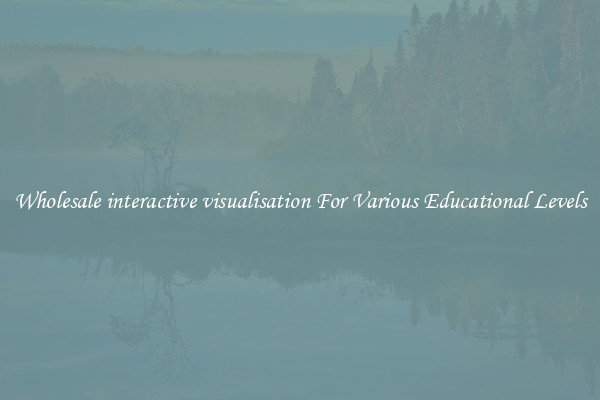Wholesale interactive visualisation For Various Educational Levels
Wholesale interactive visualization has become an increasingly popular tool in the field of education. This innovative technology allows students at various educational levels to engage with subjects in a more immersive and interactive way. From elementary school to higher education, these visualizations provide a multi-sensory learning experience that enhances comprehension and retention of information.

At the elementary school level, interactive visualizations can help young learners grasp abstract concepts more easily. For example, a science lesson on the solar system can be brought to life through 3D visualizations that allow students to explore each planet and its unique characteristics. By seeing these visuals, students can better understand the size, orbital patterns, and physical features of the planets, making the subject more tangible and relatable.
In middle school, interactive visualization becomes even more crucial in complex subjects like anatomy or chemistry. Students can dive into the human body and explore each organ system, understanding how they function and interact with one another. In chemistry, students can manipulate molecules and observe how different elements bond together, gaining a deeper understanding of chemical reactions and structure.
Moving on to high school, interactive visualizations are invaluable for subjects like physics and mathematics. With physics simulations, students can experiment with different variables and observe how they impact the outcome of an experiment. This hands-on approach allows for a more comprehensive understanding of complex physics principles, such as motion, forces, and energy. Similarly, in mathematics, students can explore geometric shapes, visualize equations, and solve problems in a more intuitive and interactive manner.
Wholesale interactive visualization can also be a game-changer in higher education settings, particularly in fields like medicine, engineering, and architecture. Medical students can immerse themselves in virtual simulations of surgeries, allowing them to practice various techniques and procedures without the risk of harming a real patient. Engineering students can design and test prototypes in virtual environments, enabling them to identify and address potential issues before moving on to physical construction. In architecture, students can create and explore virtual buildings, understanding how different design elements come together to form functional and aesthetically pleasing structures.
Overall, wholesale interactive visualizations are powerful tools that enhance education at all levels. They enable students to explore and engage with subjects in a more dynamic and immersive way, ultimately leading to a deeper understanding and retention of information. As technology continues to advance, it is crucial for educators to embrace these innovative tools and integrate them into their teaching practices. By doing so, they will foster a more interactive and engaging learning environment that prepares students for a future that demands skills beyond traditional textbook knowledge.

View details

View details

View details

View details






